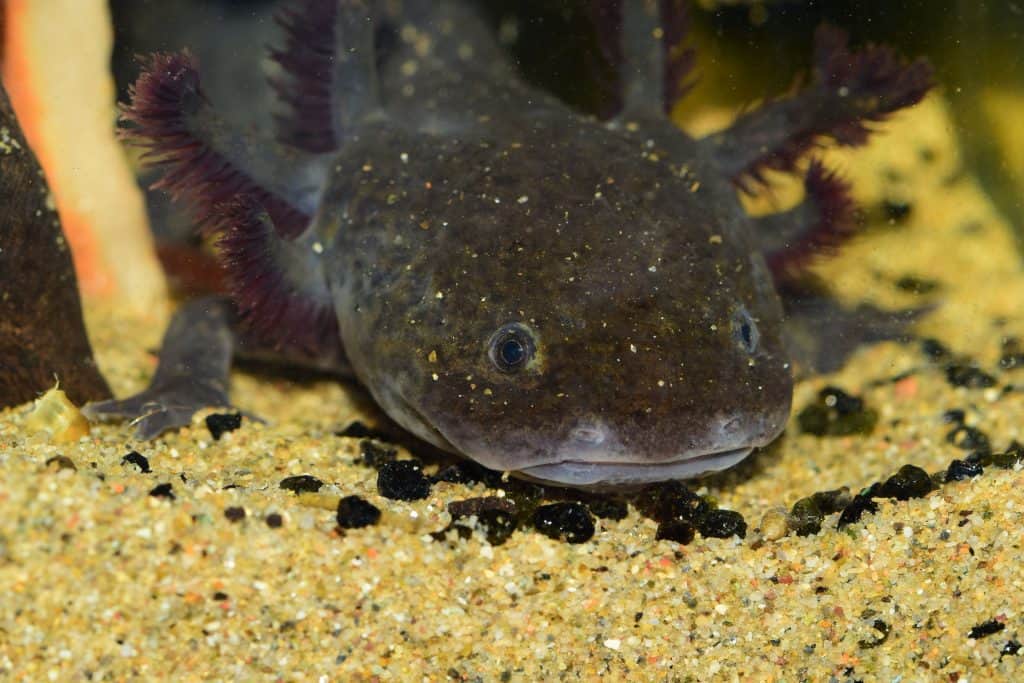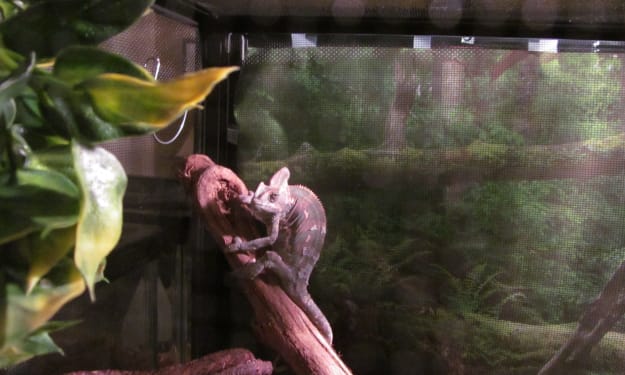Adorable Axolotls
The Merfolk that never grow up.

In my article Venom, I talked a little bit about these strange yet harmless little creatures. Now I'm back to offer some more info on keeping these salamanders which are being kept alive by the Pet Trade. Axolotl's are native to lake Xochimilco in Mexico City, but are now rarely found in the wild. These creatures now only exist in captivity in labs and as pets. They are inexpensive and easy to keep, so keeping them and breeding them is a helpful act of conservation. I won't get into breeding them, but I will give some basic tips on how to care for one.
Axolotls are amphibians like frogs, salamanders, and newts. Except Axolotls are aquatic, and they stay that way their whole lives. They never grow up. A Tiger Salamander for example will look kind of like this Axie right here until it undergoes metamorphosis into a land-crawling adult. Like tadpoles turn into frogs. The Axie never undergoes this. In Biology this is called Neoteny, the ability of an animal to live its life out in its juvenile stage. So its the Peter Pan of the Herpetology world.
Some breeders specialize in Axolotls and they are often about $40 dollars each. They come in about five different varieties. Wildtype, which is green and black. Leucistic which is white with black eyes. Golden, yellow. Albino, which is white with red eyes. And Melanistic which is black like the one in the picture above. I used to have a Melanistic one named Zora. If you buy a small blacklight flashlight and shine it on the melanistic ones at night...they glow. Just a fun little detail if you decide to get one.
I recommend buying them as adults but young ones can easily be cared for with a few extra steps. Axie's can last up to 12 to 15 years so be prepared for the responsibility. One Axie should be in a 20- gallon long tank comfortably. The water level should be at least three quarters of the way up and the filter should be on the high end of water circulation for your tank. So for a 20 gallon you should get a filter that is for 20-50 gallons. This cleans the water faster...as Axie's can be messy. For substrate, I would recommend large pebbles. Axolotls eat like vacuums so you don't want them getting impactions. I've used sand before as a substrate but its hard to clean and makes dust storms in your tank when your Axie gets hyper or you have to remove excess food.
The temperature is important. Amphibians in general can tolerate and often prefer temperatures in the 60's. Keep the Axie cool. A digital thermometer with a sensor can help you monitor the Axie's water temperature. If your Axies gills, (the tentacles behind his head are gills) look curly and upturned he may be stressed out and you may need to add some ice to the tank to bring the temperature down. Axie's will also swim up to the surface and gulp air sometimes. It's a wonderful way of seeing evolution in action. It breathes in water but also has some lung capacity.
Sometimes Axolotl food is sold as these dogfood type pellets. In my experience the Axolotl doesn't eat them all and you have to scoop out the excess food everyday. In my experience, a cube of frozen bloodworms or brine shrimp from your Pets Store's fish section will keep him well fed and happy. They siphon those things fast and eat them whole sometimes.
Most amphibians drink through their skin so just make sure you are changing the filters monthly or however often the brand suggests. I recommend Fluval filters which have a mechanical (sponge), chemical (carbon) and biological (calcium rocks in a net filled with beneficial nitrogen-fixing bacteria) components. You have to change the sponge out every 2 months, the carbon every month and the biological one every three months. Mark it on a calendar. You can opt for a cheaper filter with an easier schedule but I highly recommend these. You will also have to clean the filter regularly and occasionally clean the motor on it if the power goes out or it overheats.
You don't need any lamps or lights, though. Keeping an Axie is like keeping a fish who likes it cold. Make sure you scoop out his feces regularly or he may eat them. Also make sure to remove extra food or the decomposition can foul up the tank and kill the Axie. This is especially important for small, baby Axies. Remove the extra food and keep it in the 60's. They are extra fragile when young.
Axolotl's and most amphibians don't really like being handled...it stresses them out...and the oils on your skin can be bad for their sensitive skin. This is a pet you observe. However, make sure there are plenty of hiding places for them to feel safe. Otherwise this can also be a point of stress.
Well, I hope you found this article interesting. If you're looking to keep an awesome little "creature from the black lagoon" and try to save an endangered species, Axolotl's may be right for you.
About the Creator
Francisco Diaz
That's an old pic. I'm way older and fatter now. Getting back to writing. Maybe I'll get those Sci-Fi stories finished now eh? Plus I got about 1000 pages of journal entries I'll upload for your entertainment.
Hooah!






Comments
There are no comments for this story
Be the first to respond and start the conversation.